
Alexander Graham Bell was a Scottish-born inventor, scientist and engineer who is credited with patenting the first practical telephone. He also co-founded the American Telephone and Telegraph Company (AT&T) in 1885.
A hydrofoil is a lifting surface, or foil, that operates in water. They are similar in appearance and purpose to aerofoils used by aeroplanes. Boats that use hydrofoil technology are also simply termed hydrofoils. As a hydrofoil craft gains speed, the hydrofoils lift the boat's hull out of the water, decreasing drag and allowing greater speeds.

The invention of the telephone was the culmination of work done by more than one individual, and led to an array of lawsuits relating to the patent claims of several individuals and numerous companies.
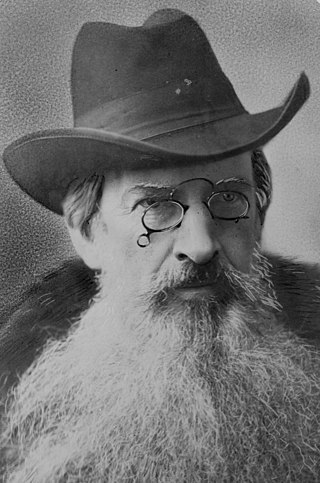
Gardiner Greene Hubbard was an American lawyer, financier, and community leader.

HMCS Bras d'Or was a hydrofoil that served in the Canadian Forces from 1968 to 1971. During sea trials in 1969, the vessel exceeded 63 knots, making her the fastest unarmed warship in the world at the time.
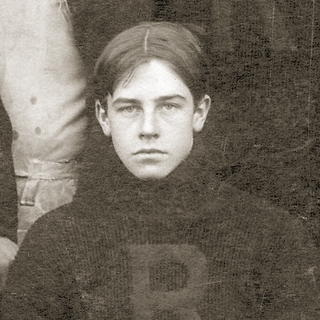
Frederick Walker Baldwin, also known as Casey Baldwin, paternal grandson of Canadian reform leader Robert Baldwin, was a hydrofoil and aviation pioneer and partner of the famous inventor Alexander Graham Bell. He was manager of Graham Bell Laboratories from 1909–32, and represented Victoria in the Nova Scotia Legislature from 1933–37, where he was instrumental in bringing about the creation of Cape Breton Highlands National Park. In 1908, he became the first Canadian and British subject to fly an airplane.

Mabel Gardiner Hubbard was an American businesswoman, and the daughter of Boston lawyer Gardiner Green Hubbard. As the wife of Alexander Graham Bell, inventor of the first practical telephone, she took the married name Mabel Bell.

Alexander Graham Bell honors and tributes include honors bestowed upon him and awards named for him.
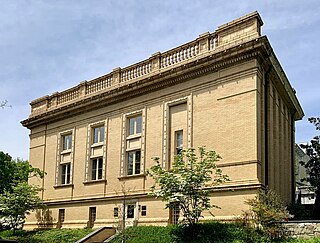
The Volta Laboratory and the Volta Bureau were created in Georgetown, Washington, D.C., by Alexander Graham Bell.(19/20th-century scientist and inventor best known for his work on the telephone)

The Bell Memorial is a memorial designed by Walter Seymour Allward to commemorate the invention of the telephone by Alexander Graham Bell at the Bell Homestead National Historic Site, in Brantford, Ontario, Canada.
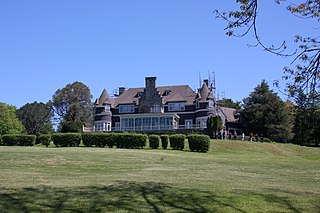
Beinn Bhreagh is the name of the former estate of Alexander Graham Bell, in Victoria County, Nova Scotia. It refers to a peninsula jutting into Cape Breton Island's scenic Bras d'Or Lake approximately three kilometres southeast of the village of Baddeck, forming the southeastern shore of Baddeck Bay.
Dorothy Margaret Eber, was a British-born Canadian author and one of the first people to transcribe and publish oral histories of Inuit in Nunavut in both English and Inuktitut.
James Hogg Hunter was a Scottish-born Canadian Christian journalist, novelist and biographer.

Alexander Graham Bell National Historic Site is a 10-hectare (25-acre) property in Baddeck, Cape Breton, Nova Scotia, Canada, overlooking the Bras d'Or Lakes. The site is a unit of Parks Canada, the national park system, and includes the Alexander Graham Bell National Historic Site, which contains the largest repository of artifacts and documents from Bell's years of experimental work in Baddeck. This site was designated a National Historic Site in 1952.
Baddeck, Nova Scotia is a village founded in 1908, with a history stretching back to early Mi'kmaq, French and British settlements. The village was home to Alexander Graham Bell and was witness to the first flight in the commonwealth with Bell's Silver Dart.

Mabel Harlakenden Grosvenor was a Canadian-born American pediatrician, and a granddaughter and secretary to the scientist and telephone inventor Alexander Graham Bell. She lived in both Beinn Bhreagh, Nova Scotia and Washington, D.C.

The Bell Homestead National Historic Site, located in Brantford, Ontario, Canada, also known by the name of its principal structure, Melville House, was the first North American home of Professor Alexander Melville Bell and his family, including his last surviving son, scientist Alexander Graham Bell. The younger Bell conducted his earliest experiments in North America there, and later invented the telephone at the Homestead in July 1874. In a 1906 speech to the Brantford Board of Trade, Bell commented on the telephone's invention: "the telephone problem was solved, and it was solved at my father's home".

HD-4 or Hydrodome number 4 was an early research hydrofoil watercraft developed by the scientist Alexander Graham Bell. It was designed and built at the Bell Boatyard on Bell's Beinn Bhreagh estate near Baddeck, Nova Scotia. In 1919, it set a world marine speed record of 70.86 miles per hour (114.04 km/h).
The Bell Boatyard was a boatbuilding facility which operated as part of Alexander Graham Bell's laboratories in Baddeck, Nova Scotia from 1885 to 1928. The boatyard built experimental craft, lifeboats and yachts during the first part of the twentieth century. The Bell yard was notable for its dual focus on both experimental and traditional boats and for its employment of large numbers of female boatbuilders.
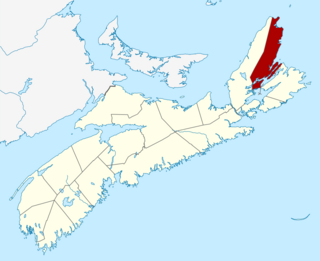
The Municipality of the County of Victoria is a county municipality on Cape Breton Island, Nova Scotia, Canada. It provides local government to about 7,000 residents of the eponymous historical county except for the Wagmatcook 1 reserve. The municipal offices are in the village of Baddeck.














